Citadella – A szabadság bástyája
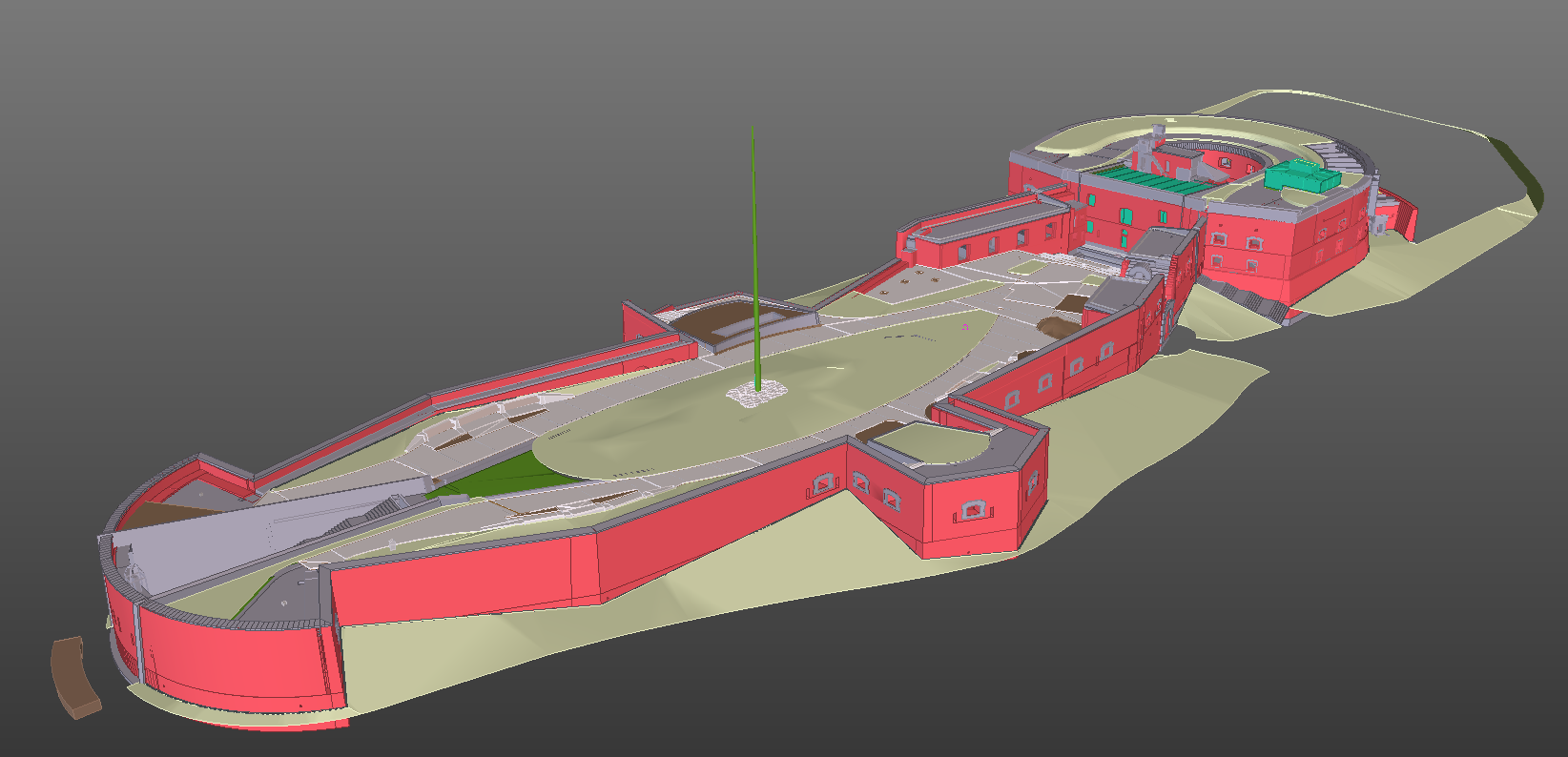
| Category | Public Interest Projects |
|---|---|
| Year | 2023 |
| Country | Hungary |
| Organization | ARC-S Group Kft. |
| Project partners | art1st design studio Kft. |
| Author | Bükkösi Raymond, Ágoston Dezső |
| Co-authors | Pap Evelyn, Bárczi Boldizsár, Damázsdi Péter, Jandek Csaba, Latorovszky András, Márta Attila |
| Place of construction | Budapest |
| Tags |
Projekt neve: Citadella projekt – „A Szabadság Bástyája”
Projekt címe: Citadella, Budapest
Projekt jellege: Műemlék épület teljeskörű átalakítása
Építés éve: 1854
Világörökségi felvétel: UNESCO – 1987
Projekt mérete: 10.850 m2
Generáltervező: art1st design studio Kft.
Generál tartószerkezet tervező: ARC-S Group Kft.
Az építmény:
A Citadella Budapest XI. kerületében, a Gellért-hegy tetején fekvő erőd, melyet az 1848-49-es szabadságharc leverése után, 1854-ben emelt a Habsburg uralkodó. Az UNESCO a budai Várheggyel és a Duna két partjának panorámájával együtt a Gellért-hegyet és így a Citadellát 1987-ben a világörökség részévé nyilvánította.
Az építmény teljeskörű átépítése során az erőd funkció közösségi térré alakítása, az elhanyagolt, lepusztult állapot megszüntetése, az egyik legjelentősebb magyarországi turisztikai látványosság méltó kiemelése a cél. Ennek eléréséhez a meglévő épületbe jelentős belebontások, hozzáépítések szükségesek.
Szerkezet leírása:
A meglévő kb. 220 m hosszú, 12-16 m falmagasságú épületszerkezet teljes egészében falazott szerkezet, mely a függőleges tartószerkezetek tekintetében átlag 1,5 m vastagságú vegyesfalazattal, a vízszintes határoló szerkezetek pedig három és öt soros téglából rakott dongaszerkezettel valósultak meg.
Az átépítés során a meglévő szerkezetbe több helyen jelentősen belemetszünk.
Az elbontott épületrészek helyére és az építményen belülre változó szerkezeti anyagokat alkalmazva, új funkciók kerülnek kialakításra. Az általánosan alkalmazott monolit vasbeton- és acél szerkezetek mellett alkalmazunk előregyártott fehér vasbetont, többrétegű ragasztott üveget, mint elsődleges teherhordó szerkezetet (üveg pillér, gerenda, födém, híd), melyet rozsdamentes acéllal kapcsolunk össze, erre kerül a hőszigetelt üvegezés. Ezen felül több helyen szükséges az idő során lerombolt falazott szerkezetek helyreállítása.
TEKLA modell felépítése:
A modell építése a meglévő állapot rögzítésével kezdődött, majd annak kettéválasztásával kialakultak a meglévő-megmaradó és meglévő-bontandó szerkezetek. A bontási-építési modellek kialakítása során fontos szempont volt, hogy a rövid kivitelezési határidő miatt azok szakaszoltak legyenek.
A szerkezet sokszínűsége okán multimateriál modellt alakítottunk ki, melyben az eltérő anyagok, anyagminőségek saját specifikációik (attribútumok) figyelembe vétele mellett kerültek elkülönítésre. A teljes készülő modell tartalmaz monolit vasbeton, előregyártott vasbeton, szénacél, rozsdamentes acél, alumínium, falazott és üveg szerkezeti anyagokat.
A szerkezeti elemeket a lehető legnagyobb részleteséggel vettük fel, így a monolit vasbeton szerkezetek tartalmazzák az összes beépítésre kerülő vaspozíciót, a szerelt szerkezetek pedig az összes beépítéshez szükséges kiegészítő elemet, réteget, ragasztót, kötőelemet.
A részletes modellezés, a rendelkezésünkre álló Trimble XR10 készülék és a HoloLens 2 előfizetés lehetőséget ad a tervezett szerkezet innovatív bemutatására, a kivitelezés korszerű nyomonkövetésére, ellenőrzésére, melynek tesztelése és cégünkön belüli részletesebb fejlesztése a projekt megvalósulásával párhuzamosan zajlik.
Jelenleg is folynak a bontási-építési folyamatok.
Meglévő, részben megmaradó, részben bontandó épületről lévén szó a modell a mai nap is formálódik. A kivitelezés során előkerülő váratlan szerkezeti problémákról, eltérésekről érkező pontfelhőkkel a szerkezeti modell folyamatosan változik, finomodik, egészen addig, amíg a tervezett átalakítás elkészül.
Készítették:
Pap Evelyn
Ágoston Dezső
Bárczi Boldizsár
Bükkösi Raymond
Damázsdi Péter
Jandek Csaba
Latorovszky András
Márta Attila
Project name: Citadel project – „Bastion of freedom”
Project address: Citadella, Budapest
Project type: Historical monument complete reconstruction
Year of construction: 1854
World Heritage status: UNESCO – 1987
Project size: 10.850 m2
General designer: art1st design studio Kft.
General structural designer: ARC-S Group Kft.
The building:
The Citadel, located in the 11th district of Budapest on the top of Gellért-hill, built by the Habsburg emperor in 1854 after repressing the Revolution and War of Independence in 1848-49. The Buda Castle Hill with the two riverbanks panorama of the Danube including the Gellért Hill and the Citadel received World Heritage status by the UNESCO in 1987.
The main goal of the complete reconstruction works is to give proper honour to one of the most prestigious Hungarian touristic attraction by transforming the original fortress function to a community space and save it from destruction. To achieve this goal considerable amount of changes are necessary in the existing building by demolishing old parts and rebuilding new parts.
Describing the structure:
The existing building structure is approximately 220 m long and has a wall height of 12-16 m. It is entirely masonry construction, with an average 1.5 m thick mixed masonry for the vertical supporting structures and a three to five row of brick dome structure for the horizontal boundary structures.
The rebuild will involve significant cuts in the existing structure in several places.
New features will be created by replacing the demolished parts of the building and by using different structural materials within the building. In addition to the commonly used monolithic reinforced concrete and steel structures, we will use precast white reinforced concrete, multi-layered bonded glass as the primary load-bearing structure (glass column, beam, slab, bridge), coupled with stainless steel, and topped with insulated glazing. In addition, the restoration of masonry structures that have been destroyed over time is required in several places.
TEKLA modelling:
The building of the model started by capturing the existing condition and then splitting it into existing-remaining and existing-demolition structures. An important consideration in the design of the demolition-construction models was to ensure that they were phased due to the short construction timeframe.
Due to the diversity of the structure, a multi-material model was developed, in which different materials and material properties were separated taking into account their own specifications (attributes). The complete model ultimately includes monolithic reinforced concrete, precast reinforced concrete, carbon steel, stainless steel, aluminium, masonry and glass structural materials.
The structural elements are included in as much detail as possible, so that the monolithic reinforced concrete structures include all the rebars to be installed, and the precast structures including all the additional elements, layers, adhesives and fasteners required for installation.
The detailed modelling, the Trimble XR10 device and the HoloLens 2 subscription available to us provide the opportunity for innovative presentation of the designed structure, modern monitoring and full control of the construction, the testing and more detailed development of which within our company is taking place in parallel with the implementation of the project.
The demolition and construction works are currently in progress.
As an existing building, part of which is to be preserved and part of which is to be demolished, the model is still evolving. As unexpected structural problems and discrepancies arise during the construction process, the structural model is constantly changing and refining until the designed conversion is completed.
Participated in the design:
Evelyn PAP
Dezső ÁGOSTON
Boldizsár BÁRCZI
Raymond BÜKKÖSI
Péter DAMÁZSDI
Csaba JANDEK
András LATOROVSZKY
Attila MÁRTA
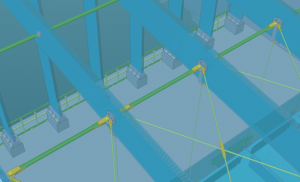
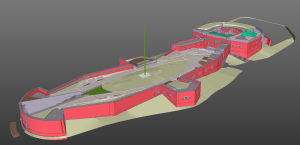
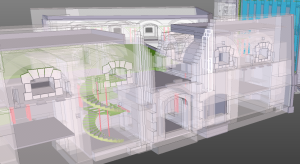
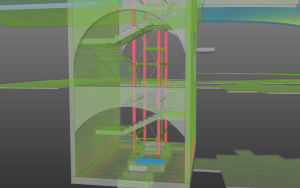


Jár a pont 🙂 Szép munka!